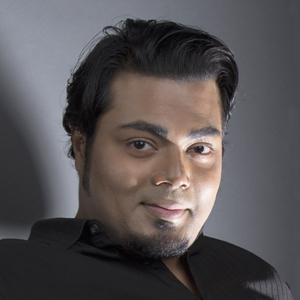Designing a career in science and art
Something was missing. Several years ago, I felt its absence growing. It was beginning to drive me insane.
After getting a M.Sc. in bioinformatics, I worked as a research fellow for a year and then became a joint Ph.D. student of math and medical oncology before landing a postdoc doing cancer research. I was living a conventional life of science — becoming a character straight out of the show “The Big Bang Theory.”
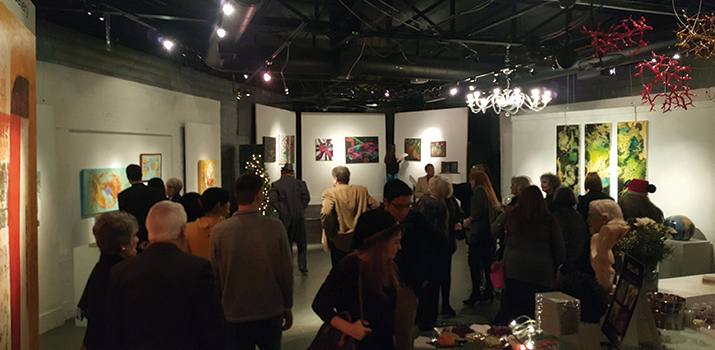 Artworks by the members of the Cancer ART-SCI network in the LuminArté gallery in Dallas, Texas.PHOTOS PROVIDED BY DEB
Artworks by the members of the Cancer ART-SCI network in the LuminArté gallery in Dallas, Texas.PHOTOS PROVIDED BY DEB
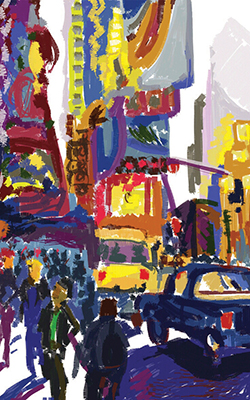 Early example of Deb’s art.
Early example of Deb’s art.
But there was another part of me, an artistic side. I’d practiced studio-based art throughout my childhood and loved it. But during my scientific journey, the artist in me had become stifled by the solid bars of reproducibility, statistical significance and peer-reviewed publications. Over time, my vital connection to art had been reduced to a hobby.
In 2011, I lost my mother to an aggressive brain cancer. The pain and anguish of that loss made me think hard about the purpose of my life. It was then that it came to me that I love science and want to keep working on cancer research. But I also love art. Could there be a way to combine these passions?
Would it be possible to put scientific methodologies together with artistic practices and still advance prevention, diagnosis or a cure for cancer?
Maybe, I thought, I could pursue the “how” of cancer in the lab during the day and the “why” of cancer in the studio during the night. But how?
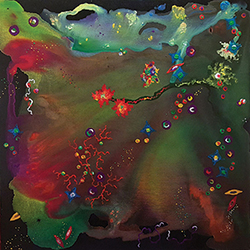 “Hallmarks of cancer” created by Deb.
“Hallmarks of cancer” created by Deb.
Finding cancer scientist–artists
I started looking into existing art-science collaborative projects and searching for people trained in both scientific research and artistic practices. Although I found that there were many scientists and artists involved in various types of collaborations, there were few cancer scientist-artists like me interested in using artistic processes to do better cancer research in addition to simply making art about cancer.
There was a plethora of work on art therapy and science outreach related to cancer. There were many examples of cancer data visualization too. But back then none of them rigorously combined scientific methodologies with artistic practices to generate novel research ideas or propose solutions for the crucial problems faced by cancer researchers when real-life data were not available.
One such problem is the variability of cancer cells. Even within one tumor, there can be cells with different biological properties and therapeutic implications. When I apply techniques of visual art, such as divergent thinking, to this problem, I can come up with a conceptual model for studying all the biological properties (known as the ten hallmarks of cancer) of tumors at the single-cell level. For me, an essential part of this creative idea generation process is the visualization of such a conceptual model in drawing and painting.
Was it possible that on the other side of the planet someone was thinking just like me? I began to envision a network that would bring together cancer scientist-artists from around the world.
During this time, I also was taking a leadership course aimed at boosting communication skills. As part of my homework, I researched executive editors, founders, directors and CEOs of professional societies, nonprofits and academic journals interested in merging art and science. I made a list of people that I was interested in speaking with about the project and reached out to them.
Cynthia Pannucci, the founder and director of Art & Science Collaborations, or ASCI, in New York City, was the first to reply. She not only encouraged my idea of a cancer, art and science group, which I would go on to name the Cancer ART-SCI Network, but also connected me with Roger Malina, the executive editor of an art and science journal called Leonardo. Malina liked my idea. I published a peer-reviewed article in Leonardo called “Understanding the unpredictability of cancer using chaos theory and modern art techniques.” Response was positive, and I proposed an “ art and cancer” special section in Leonardo. Malina agreed on the condition that I be the guest editor and form an editorial advisory committee. The special section aims to document studies where scientific methodologies combined with artistic practices could advance prevention, diagnosis or cure for cancer.
By the time the Leonardo special section was underway, I had made contact with about 10 other scientist-artists who shared my vision. Now that there was a publication willing to cover the intersection of cancer research and art, how could I grow this small network? Was there a way to reach out to cancer scientist-artists worldwide?
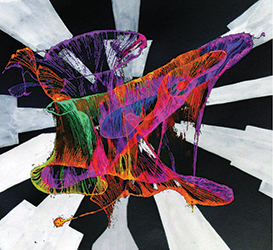 “Strange attractor of cancer in its phase space” created by Deb in 2015.
“Strange attractor of cancer in its phase space” created by Deb in 2015.
Expanding the network
In 2013, I was giving an award lecture about my work on identifying novel therapeutic targets in lung cancer at the Memorial Sloan-Kettering Cancer Center in New York. The talk was on the same day as the Leonardo Art Science Evening Rendezvous seminar, which goes by the acronym LASER, in New York City. I spoke to the organizers of LASER, and they agreed to let me present my cancer-art collaborative work at the seminar.
I literally carried two bags on my shoulder that day — one from the science conference and the other from the art event. The LASER meeting got me a lot of new contacts in New York City. In addition, I was interviewed by the online magazine Sci-Art in America and got featured by ASCI. Soon after, I recorded a podcast on our growing network of cancer researchers and artists at the University of Texas at Dallas and was invited to a meeting arranged by the National Academies on combining art, science, engineering and medicine.
The Cancer ART-SCI Network started getting international attention. Le Scienze in Italy and MedInArt in Greece featured an ongoing visual art project we produced called “Cancer: Finding Beauty in the Beast,” on their websites.
I recently curated and participated in a gallery installation to show the works of art created by the members of Cancer ART-SCI Network. It involved paintings, sculptures and photography created by six scientists and artists.
Loving life
Now I am living a life that I love. I am a scientist by day and an artist at night. I would like to stay that way. In the future, if I’m offered the chance to practice both as part of one job, I will take it.
The Cancer ART-SCI Network is a fast-growing community, and it already has members from several countries around the world. At some point, I may create a nonprofit organization to manage its burgeoning activities.
I feel this is just the beginning of a fulfilled life.
Enjoy reading ASBMB Today?
Become a member to receive the print edition four times a year and the digital edition monthly.
Learn moreGet the latest from ASBMB Today
Enter your email address, and we’ll send you a weekly email with recent articles, interviews and more.
Latest in Opinions
Opinions highlights or most popular articles
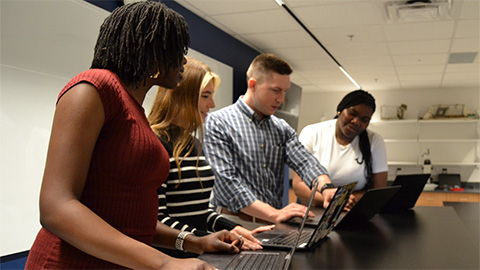
Debugging my code and teaching with ChatGPT
AI tools like ChatGPT have changed the way an assistant professor teaches and does research. But, he asserts that real growth still comes from struggle, and educators must help students use AI wisely — as scaffolds, not shortcuts.

AI in the lab: The power of smarter questions
An assistant professor discusses AI's evolution from a buzzword to a trusted research partner. It helps streamline reviews, troubleshoot code, save time and spark ideas, but its success relies on combining AI with expertise and critical thinking.
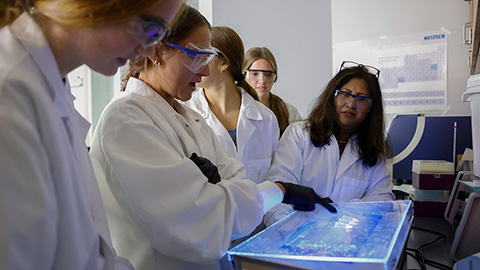
How AlphaFold transformed my classroom into a research lab
A high school science teacher reflects on how AI-integrated technologies help her students ponder realistic research questions with hands-on learning.
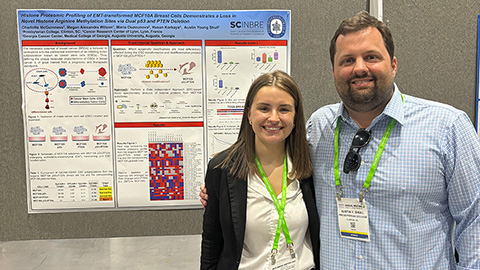
Writing with AI turns chaos into clarity
Associate professor shares how generative AI, used as a creative whiteboard, helps scientists refine ideas, structure complexity and sharpen clarity — transforming the messy process of discovery into compelling science writing.
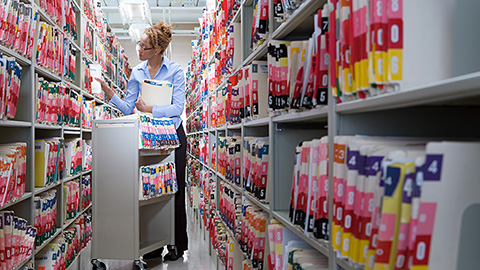
Teaching AI to listen
A computational medicine graduate student reflects on building natural language processing tools that extract meaning from messy clinical notes — transforming how we identify genetic risk while redefining what it means to listen in science.
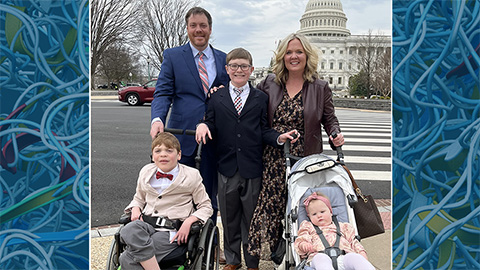
What’s in a diagnosis?
When Jessica Foglio’s son Ben was first diagnosed with cerebral palsy, the label didn’t feel right. Whole exome sequencing revealed a rare disorder called Salla disease. Now Jessica is building community and driving research for answers.

